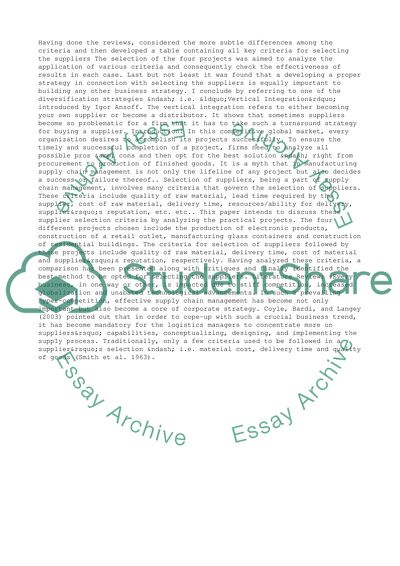Cite this document
(“The Selection of Suppliers Essay Example | Topics and Well Written Essays - 3000 words”, n.d.)
The Selection of Suppliers Essay Example | Topics and Well Written Essays - 3000 words. Retrieved from https://studentshare.org/management/1426329-commercial-and-procurement-selection-of-suppliers
The Selection of Suppliers Essay Example | Topics and Well Written Essays - 3000 words. Retrieved from https://studentshare.org/management/1426329-commercial-and-procurement-selection-of-suppliers
(The Selection of Suppliers Essay Example | Topics and Well Written Essays - 3000 Words)
The Selection of Suppliers Essay Example | Topics and Well Written Essays - 3000 Words. https://studentshare.org/management/1426329-commercial-and-procurement-selection-of-suppliers.
The Selection of Suppliers Essay Example | Topics and Well Written Essays - 3000 Words. https://studentshare.org/management/1426329-commercial-and-procurement-selection-of-suppliers.
“The Selection of Suppliers Essay Example | Topics and Well Written Essays - 3000 Words”, n.d. https://studentshare.org/management/1426329-commercial-and-procurement-selection-of-suppliers.


